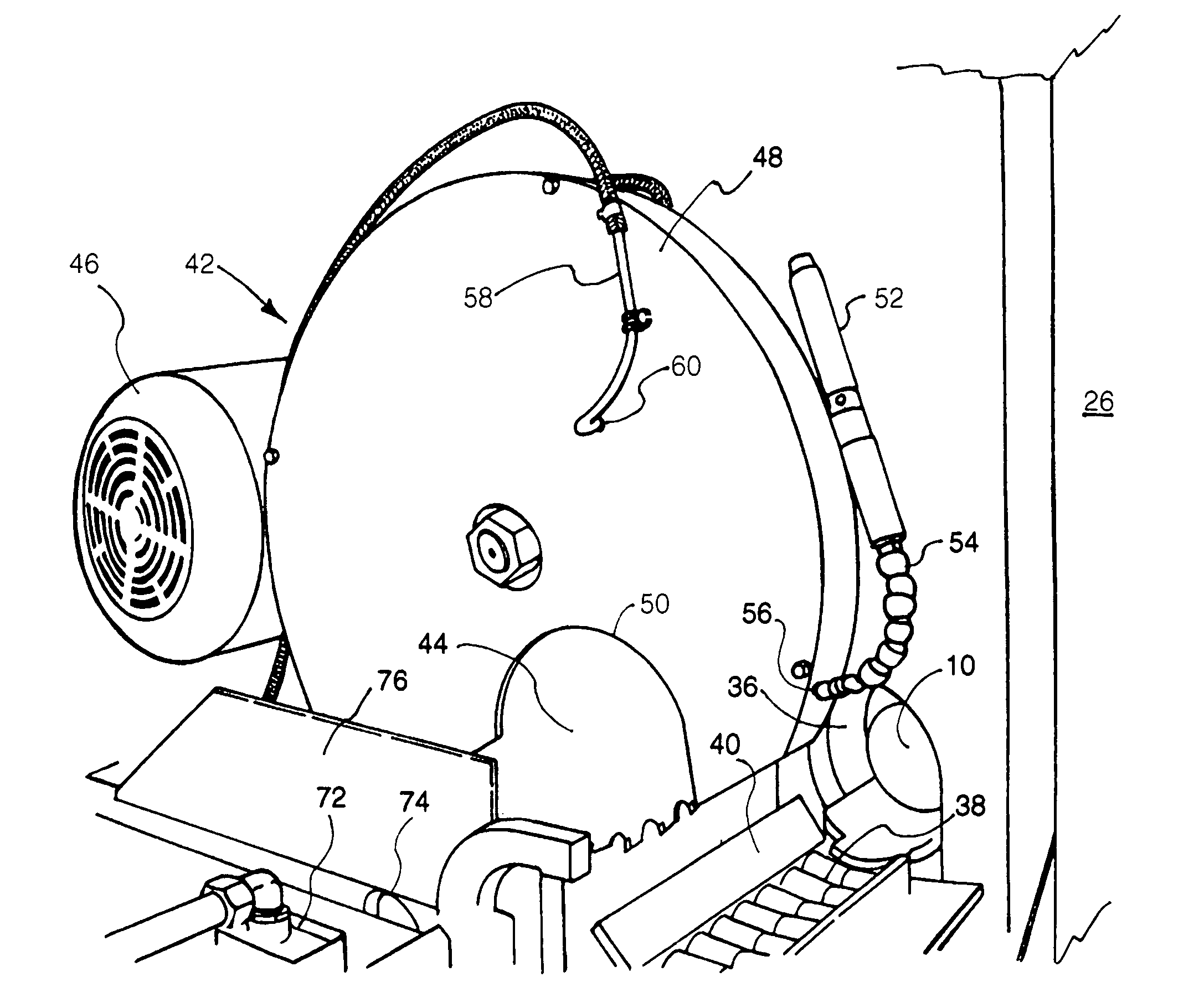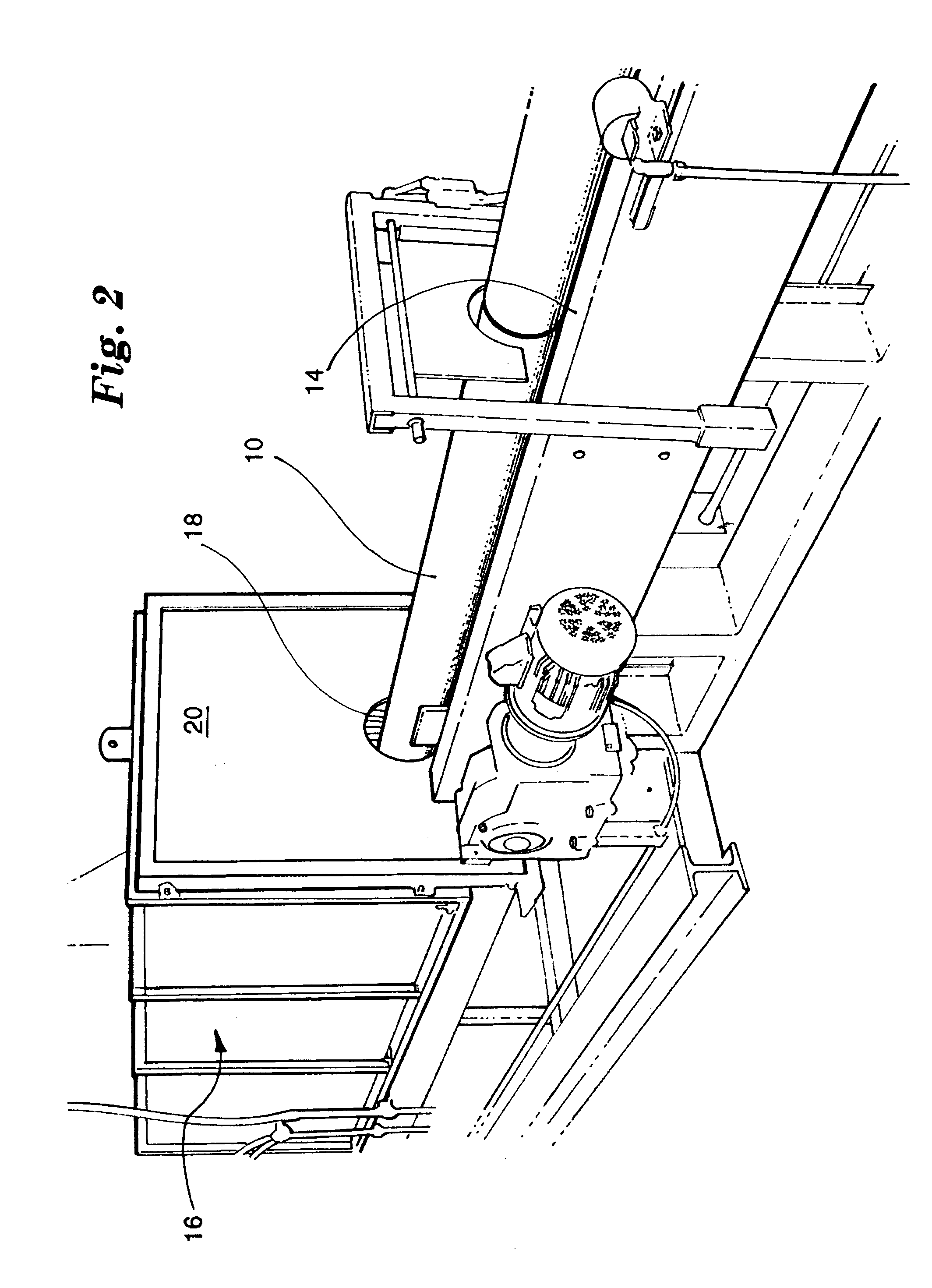Hot cut aluminum billet saw
a technology of billet saw and hot cut aluminum, which is applied in the direction of metal sawing devices, metal sawing accessories, manufacturing tools, etc., can solve the problems of affecting the cutting effect of hot cut aluminum billet saw. , to achieve the effect of reducing the friction between the blade and the blade, reducing scrap, and reducing the cutting temperatur
- Summary
- Abstract
- Description
- Claims
- Application Information
AI Technical Summary
Benefits of technology
Problems solved by technology
Method used
Image
Examples
Embodiment Construction
[0024]Referring to the drawings, a plurality of aluminum logs 10, typically about 5 to 16 inches in diameter and up to 20–24 feet in length, are positioned on a rack 12 leading to a horizontal roller conveyor 14, which extends through a furnace 16 (FIG. 2) of conventional design. Logs 10 enter the furnace in end to end alignment through an opening 18 in the upstream end of the furnace. The furnace is covered by an enclosure 20. The logs are heated in the furnace as they extend along the length thereof until they reach a downstream or outlet end 22. In the furnace, the aluminum logs are heated to a temperature of 800–950° F. In aluminum forming operations, it is important to heat the aluminum to a proper temperature. Aluminum melts at about 1220° F. and has a fairly narrow range of increased malleability below the melting point of the material. It is desirable to maintain the aluminum at a temperature at which it will not melt, even when the aluminum is caused to be heated further by...
PUM
| Property | Measurement | Unit |
|---|---|---|
| temperature | aaaaa | aaaaa |
| diameter | aaaaa | aaaaa |
| temperature | aaaaa | aaaaa |
Abstract
Description
Claims
Application Information
 Login to View More
Login to View More - R&D
- Intellectual Property
- Life Sciences
- Materials
- Tech Scout
- Unparalleled Data Quality
- Higher Quality Content
- 60% Fewer Hallucinations
Browse by: Latest US Patents, China's latest patents, Technical Efficacy Thesaurus, Application Domain, Technology Topic, Popular Technical Reports.
© 2025 PatSnap. All rights reserved.Legal|Privacy policy|Modern Slavery Act Transparency Statement|Sitemap|About US| Contact US: help@patsnap.com



